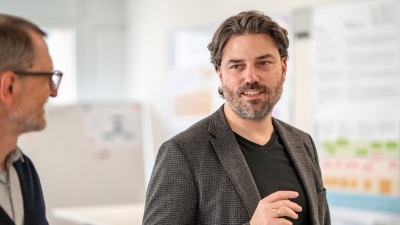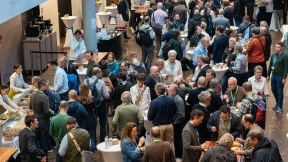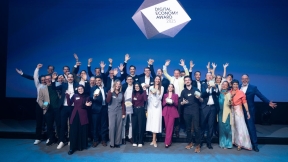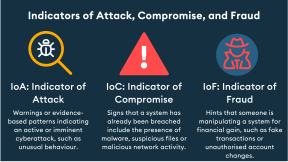A digital ecosystem for networked research
Â̲èÖ±²¥ has successfully applied to participate in the EOSC Data Commons project. The project aims to enable researchers to find, analyse, store and share data more efficiently - for better collaboration, networking and faster insights.

Climate change and energy supply are among the major challenges of this century. Researchers are working feverishly to solve these problems. A multidisciplinary approach is needed for groundbreaking solutions to emerge. Research needs a digital ecosystem that supports the exchange of data and tools across disciplinary boundaries. This is why the European Commission has launched various projects as part of Horizon Europe, including , in which Â̲èÖ±²¥ is also involved.
Sebastian Sigloch is leading this project at Â̲èÖ±²¥. He and his team have a great deal of expertise in the areas of FAIR Data and Open Science. In this interview, he explains what the project is about and what benefits the Swiss research community can expect.
Sebastian, congratulations on your successful application. Please tell us what the EOSC Data Commons project is about.
Thank you very much. I would also like to pass on the congratulations to my colleagues in the team. EOSC Data Commons is about improving the entire lifecycle of research data - from search and analysis to long-term storage and reuse. 22 European partner organisations are working together to develop new digital solutions to make it easier for researchers to access, analyse and share data.

Can you give us some examples?
The five most important solutions – also known as service packages – are:
- The intelligent search for research data: A system analyses metadata - descriptive information about research data and services - using AI, making it easier to find relevant data and services.
- The networking of data sources: A platform connects different data sources (federation of data repositories) and researchers with tools for analysing and using this data.
- Digital tools for researchers: A collection of scientific software tools that can be used seamlessly with research data. This also includes standards for metadata to ensure that the tools are compatible with each other.
- The provision and use of software: A service that enables researchers to run the required analysis tools directly after the search in a suitable infrastructure without having to install them themselves.
- The quality check of the data: A system for assessing how well the data complies with the FAIR principles, i.e. whether it is Findable, Accessible, Interoperable and Reusable. This also includes guidelines to improve the reuse of data.
Â̲èÖ±²¥ is taking the lead in setting up the first work package, the data infrastructure for the intelligent search for research data and services. To this end, we will be working together with a number of European and Swiss institutions.
How did Â̲èÖ±²¥ come to be given the lead for this particular service package?
For some time now, Â̲èÖ±²¥ has been working on setting up a basic infrastructure and data services for the intelligent search for research data using metadata. In particular, this involves metadata that has so far been difficult to find or is barely visible to researchers. The beta product , for example, has emerged from this development of expertise. This experience ultimately led to us being recognised as a leading partner organisation at European level in this service package. Our Open Data Navigator will now be continued in this project.
That sounds promising. What impact is your work going have?
Twelve organisations from various scientific disciplines are participating in EOSC Data Commons: Social Sciences, Humanities, Physics, Life Sciences, Health and Environmental Sciences. During the project period, we are focussing primarily on specific use cases from these disciplines. In this way, we ensure that solutions are developed together with the disciplines and tailored precisely to their needs. EOSC Data Commons will also connect with the emerging EOSC nodes to generate a broader impact. Together with our partner institutions, we will clarify how the results can be further utilised in Switzerland. In addition to Â̲èÖ±²¥, ETH Zurich, the University of Zurich and the Swiss Institute of Bioinformatics are also involved in the project from Switzerland.
What exactly are these EOSC nodes and how do they interact?
A node can be thought of as a digital access point. It allows researchers to access various services, data, tools and computing capacities – all in an open and networked environment. The is currently the central access point of a federation. Further EOSC nodes are to join together to form a federation. Each node will then provide its end users with access to resources for their communities according to common rules. According to the project description, EOSC Data Commons will connect with the EOSC EU Node – or rather with the emerging EOSC federation. At the same time, there are other initiatives that will have an impact on this network.
So EOSC Data Commons is not the only initiative in which Â̲èÖ±²¥ is involved?
That's right. Â̲èÖ±²¥ has been a member of the EOSC Association for some time and is also involved in two task forces there. You can think of it as a brain pool in which experts specify common core areas of EOSC and bring them to fruition. Â̲èÖ±²¥ will also participate in the Horizon Europe project . National activities are also being organised in Switzerland around these European projects. It is important for us to build a bridge between the universities and the European projects. Â̲èÖ±²¥ represents the interests of its beneficiaries and strengthens solidarity and interdisciplinary cooperation across all institutions. The aim is to tap potential synergies and to prepare and actively involve our scientific communities in the upcoming EOSC federation.

Why do you think Â̲èÖ±²¥ is the right organisation to take this topic into the future?
In my opinion, Â̲èÖ±²¥ has three key strengths for successfully connecting Swiss organisations to the emerging EOSC federation: Firstly, we operate as a foundation under the governance of universities, the federal government and the cantons. Thanks to this broad base, we can fulfil our tasks independently. Secondly, we have the ability to develop transversal digitalisation topics in the Swiss education and research area and to bundle the common interests of the various communities with regard to EOSC. We have built up the necessary expertise in this area. Thirdly, we are very well networked internationally – for example via GÉANT – and have many years of expertise in the areas of networks, cyber security, identity management and the cloud. This makes us a strong provider and guardian of ICT infrastructures to ensure a sovereign and secure digital future in Switzerland within the framework of EOSC. Overall, we can make a specific contribution to the shared, cost-efficient and sustainable use of data, services and research infrastructures in Switzerland and prepare the ecosystem for this.






